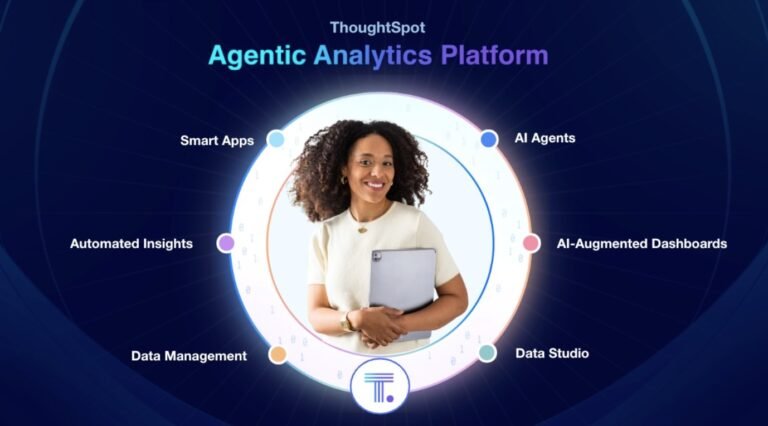Imagine a seasoned chef who doesn’t wait for someone to ask about the inventory. Instead, they notice the diminishing basil supply, predict tomorrow’s demand based on reservation patterns, and automatically order fresh herbs before anyone realizes they’re running low. This is the essence of agentic analytics: systems that observe, decide, and act without waiting for human intervention.
Traditional analytics resembles a reference library. You walk in, ask questions, and receive answers. Agentic analytics, however, transforms that library into a vigilant advisor who reads the world around you, anticipates your needs, and presents solutions before you articulate the problem. For professionals pursuing a Data Scientist Course in Bangalore, understanding this shift from reactive to proactive systems represents the frontier of modern data practice.
The Architecture of Autonomous Intelligence
Building agentic analytics requires rethinking how we structure data workflows. At its core, the system needs three interconnected components: sensors, decision engines, and execution frameworks. The sensors continuously monitor data streams, much like a security system watching for unusual patterns. These aren’t passive observers but active interpreters that understand context and recognize significant deviations from expected behaviors.
The decision engine functions as the system’s consciousness. It evaluates incoming signals against learned patterns, business rules, and predictive models. When a customer’s browsing pattern suggests imminent churn, or when supply chain data indicates a potential disruption three weeks out, the engine doesn’t file a report. It formulates a response strategy. The execution framework then carries out these decisions, whether that means triggering targeted retention campaigns, adjusting inventory algorithms, or alerting human stakeholders when situations require judgment beyond the model’s training.
Teaching Models to Think Ahead
The magic of agentic systems lies in their ability to operate in continuous time rather than discrete queries. Traditional analytics answers the question “What happened?” Predictive analytics tackles “What might happen?” But agentic analytics addresses “What should I do about what’s about to happen, and can I act before it becomes critical?”
Training models for this proactive stance demands a different approach. You’re not just teaching pattern recognition but decision-making under uncertainty. The model must learn not only to identify a declining engagement trend but also to evaluate whether that trend warrants immediate action, scheduled intervention, or continued observation. This nuanced judgment separates useful automation from alert fatigue. Students enrolled in a Data Scientist Course in Bangalore increasingly focus on these decision-theoretic frameworks that bridge pure statistics and operational strategy.
From Triggers to Trust
The thorniest challenge in agentic analytics isn’t technical capability but human acceptance. When a model independently decides to reallocate a marketing budget or adjust pricing parameters, it’s making choices that traditionally belonged to experienced professionals. Building trust requires transparency in the decision-making process and carefully calibrated autonomy levels.
Start with low-stakes decisions where errors carry minimal consequences. A system that auto-generates draft reports or suggests meeting times builds confidence differently than one that approves supplier contracts. Create clear audit trails showing why the model chose specific actions. Implement confidence thresholds where uncertain decisions escalate to human review. Over time, as the system demonstrates sound judgment, you can gradually expand its autonomous scope.
The goal isn’t to replace human insight but to extend it. Think of agentic analytics as deploying hundreds of attentive assistants who handle routine pattern recognition and straightforward responses, freeing human experts to tackle genuinely complex challenges requiring creativity, ethical reasoning, and strategic vision.
Real-World Implementations
Financial institutions have pioneered agentic analytics for fraud detection. Rather than waiting for security teams to review suspicious transactions, systems now autonomously freeze accounts, request additional verification, and even predict fraud attempts based on behavioural precursors. These models don’t just flag anomalies; they take protective action within milliseconds.
Manufacturing environments use agentic systems to predict equipment failures and automatically schedule maintenance during optimal downtime windows. The models consider production schedules, part availability, technician calendars, and failure probabilities to orchestrate maintenance with minimal operational disruption. Healthcare platforms deploy similar approaches to monitor patient vitals and proactively adjust medication dosages or alert care teams before conditions deteriorate.
These implementations share common characteristics: they operate in domains with clear success metrics, abundant training data, and well-defined action spaces. As professionals complete a Data Scientist Course in Bangalore or similar programs, they’re increasingly equipped to identify similar opportunities within their organizations.
The Path Forward
Agentic analytics represents evolution rather than revolution. You don’t need to rebuild your entire data infrastructure overnight. Start by identifying processes where timely action creates disproportionate value. Customer retention windows, inventory optimization, and system performance management often present ideal starting points.
Design your initial agents narrowly. A focused model that excels at one autonomous decision proves more valuable than an ambitious system that mediates everything poorly. As you accumulate wins, expand gradually. Document lessons learned, particularly around edge cases where automated decisions fell short. These become training scenarios for the next iteration.
The future of analytics isn’t humans asking better questions of static data. It’s intelligent systems that recognize important questions before we think to ask them and take appropriate action while the opportunity still exists. In this emerging landscape, the analyst’s role evolves from query author to system architect, designing autonomous workflows that amplify human capability rather than merely responding to human curiosity. That transformation requires new skills, new thinking, and comfort with systems that don’t wait for permission to be useful.
